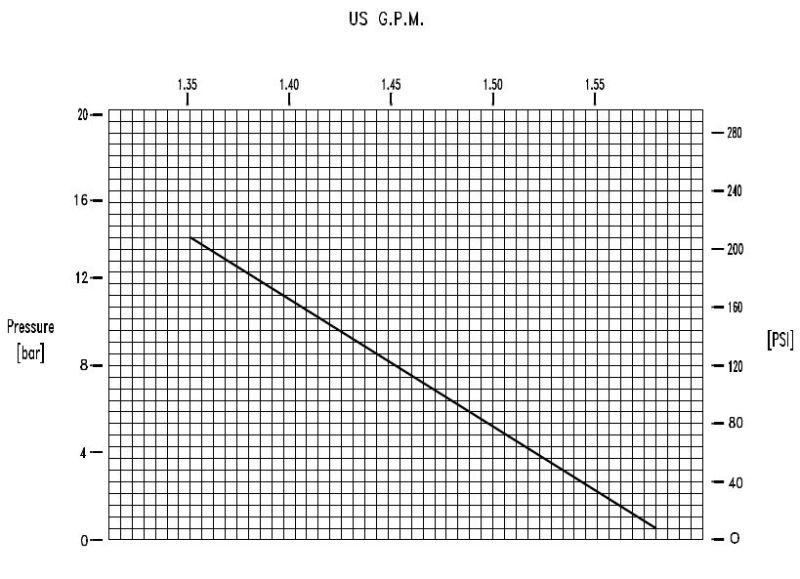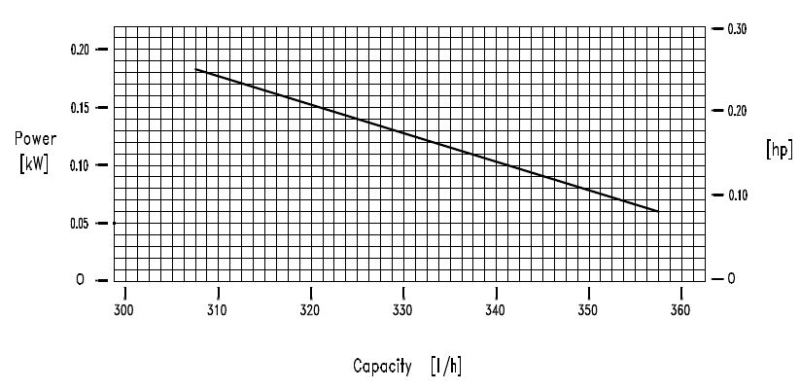heinasirkka
Mechanical
- Dec 8, 2016
- 22
Dear all,
I don't know a lot about pumps and I'm having difficulties in understanding the pump curve provided by the manufacturer. I tried to contact them several times but they are not very helpful. It is a rotary positive displacement pump (sliding vane). These curves are for 1450 RPM.
- Why does the required power decrease as the flow rate increase? I thought the flow rate increases with the increasing RPM.
- What do they mean by the pressure? Is it the Net Required Inlet Pressure or the pressure difference to be overcome by the pump?
- I control the speed with a variable frequency drive. I'd like to go to higher RPMs for short periods as far as the power limitation allows. Then I suppose the flow rate and the required power will increase linearly as well. But will that "pressure" increase in squares, am I right?
I'd be very thankful if you could help me


I don't know a lot about pumps and I'm having difficulties in understanding the pump curve provided by the manufacturer. I tried to contact them several times but they are not very helpful. It is a rotary positive displacement pump (sliding vane). These curves are for 1450 RPM.
- Why does the required power decrease as the flow rate increase? I thought the flow rate increases with the increasing RPM.
- What do they mean by the pressure? Is it the Net Required Inlet Pressure or the pressure difference to be overcome by the pump?
- I control the speed with a variable frequency drive. I'd like to go to higher RPMs for short periods as far as the power limitation allows. Then I suppose the flow rate and the required power will increase linearly as well. But will that "pressure" increase in squares, am I right?
I'd be very thankful if you could help me


